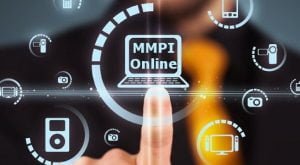The MMPI-2 Test Score
The interruption of the MMPI 2 is called the MMPI-2 Test SCORE. Assigned to each question within the MMPI quiz is a base score of zero which will in total produce a mean score of around 50 for each of the scales being measured. Certain combinations of answers to the questions will add or minus 1 point of your score and at the end your final result is presented.
The score average is around 50 (The test will adjust averages for males and females and a few other different aspects) with a standard deviation of 10 points per deviation Thus, a score of 60 is one standard deviation above the mean, while a score of 30 is two standard deviations below the mean.
MMPI-2 Scoring & Interpretation Meaning
After the MMPI-2 is taken and scored, an interpretive report is constructed by the psychologist. Scores are converted to what are called normalized “T scores” on a scale ranging from 30 to 120. The “normal” range of T scores is from 50 to 65. Anything above 65 and anything below 50 is considered clinically significant and open for interpretation by the psychologist.
Throughout the years and over numerous research studies, a set of standard clinical profiles have emerged on the MMPI-2 which professionals call “codetypes.” A codetype is simply when two scales demonstrate significantly high T scores, with one being higher than the other. For instance, a 2-3 codetype (meaning that both Scale 2 and Scale 3 are significantly elevated) suggests significant depression, lowered activity levels and helplesness; furthermore the person may have become accustomed to their chronic problems and often have physical complaints.
Dozens of clinical codetypes are well-known and understood, as well as T scores that “spike” on a single Scale (such as a “Spike 4”, which would be a sign of a person who shows impulsive behavior, rebelliousness and poor relationships with authority figures). People with little or no psychopathology or personality concerns will not reach significance for any particular codetype. Most people with personality or mental health issues will usually have only one codetype, or a single codetype with a spike on a third scale.
Like all psychological interpretation, scores are analyzed in context of the individual being tested — not in a vacuum. For instance, we might expect a higher score in Hypomania (a measure of energy levels) in a teen, but it might be more unusual to see such a score in a senior citizen. Ideally, the MMPI-2 is being administered as a part of a battery of psychological tests, so that other testing can either confirm or deny the hypotheses the MMPI-2 may suggest.
Cited from psychcentral.com
Understanding Standard Deviation
Standard deviation is a widely used measure of variability or diversity used in statistics and probability theory. It shows how much variation or “dispersion” exists from the average (mean, or expected value). A low standard deviation indicates that the data points tend to be very close to the mean, whereas high standard deviation indicates that the data points are spread out over a large range of values.

It is useful for expressing the variability of a population, standard deviation is commonly used to measure confidence in statistical conclusions.
How to Read your Score
1) Identify the T score you want to interpret.
This will come from the results of the test
2) Look at your T score on the normal distribution.
Average is any score between 40-60, A slight issue would be between 30-40 or 60-70. Problem areas with a score below 30 and over 70
3) Compare your score to the average T score.
Different for males and females
4) Look at what the test (and thus the T score) is measuring.
This is in the Scales (found here)
The accurate interpretation of your MMPI results is one of the reasons those who are trained and qualified to administer the MMPI tests like to strongly discourage people attempting to do it themselves. It does take training and knowledge to get a psychological accuracy that is useful for employment or court use of the MMPI.
How to Practice the MMPI 2 Personality Test
Practice the MMPI 2 (Minnesota Multiphasic Personality Inventory) for just $3.49 you can take the MMPI Online (Test & Results only, no analysis or interpretation provided.)
Learn how to preapre and beat the MMPI Exam for the price of a cup of coffee





